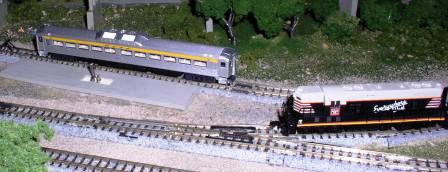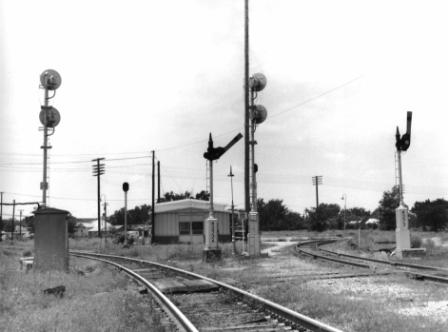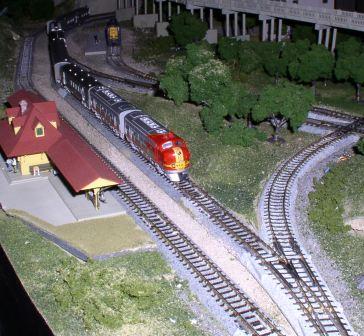As originally conceived, the Texas & Southwestern was set up with a very simple DCC system. The railroad uses a DCS50 Zephyr as its command station and booster. The Zephyr is connected to a central power bus, and all tracks, stationary turnout decoders and the automated reverse loop unit are connected to it. Likewise, the LocoNet connections are a series of simple cable connections starting at the Zephyr and ending at the last Universal Panel. The T&SW works well with this arrangement, but there are additional devices that will enhance the operation of this railroad.

Digitrax PM42 Power Management System Should the railroad continue to grow, one possible addition would be a PM42 Power Manager. As originally wired, the T&SW's Zephyr was connected directly to a power bus which served the track, turnout decoders and AR1 Auto Reversing Controller. In most cases, this has been sufficient, but a small problem emerged. Whenever there was a short circuit on the railroad (usually at a misaligned track switch), the entire system would shut down. Once shut down, it was not possible to operate the track switches or the trains. So, when a train stalled at an improperly positioned turnout, it was not possible to back the train away from the turnout to operate that turnout. The PM42 Power Manager connects a single booster (in this case, the Zephyr) and divides its power output into 4 power sub-districts for improved operation by preempting booster shutdown when a short circuit is detected by the PM42. For small railroads such as the Texas & Southwestern, the PM42 improves operations without adding further power supplies. In addition, each of the PM42's power nodes can be set up for auto-reversing. On the Texas & Southwestern, the PM42 could be configured so that the track power is monitored by one node of the PM42. The power bus for the turnouts could be connected the second node of the PM42. The reverse loop could be connected to the third node of the PM42, which has been configured for Auto-reversal, replacing the AR1. By doing so, a short circuit in one power district does not affect the other power districts because the PM42 isolates each electrical function of the railroad.

Signals: The Texas & Southwestern offers good opportunities for signals. The railroad would need to be divided up into detection sections, each connected to either one BDL168 or several BD4s. Once the presence of trains is detected, a computer program such as Railroad & Co. would be necessary for signaling logic. Once the logic was applied, an SE8C or similar device would be used to drive the signals themselves.

Many thanks to Mr. Riley O'Connor for sharing the Texas & Southwestern with us.